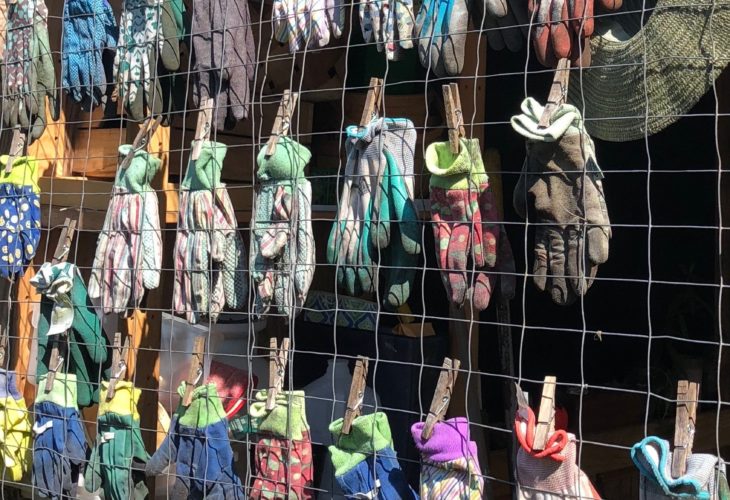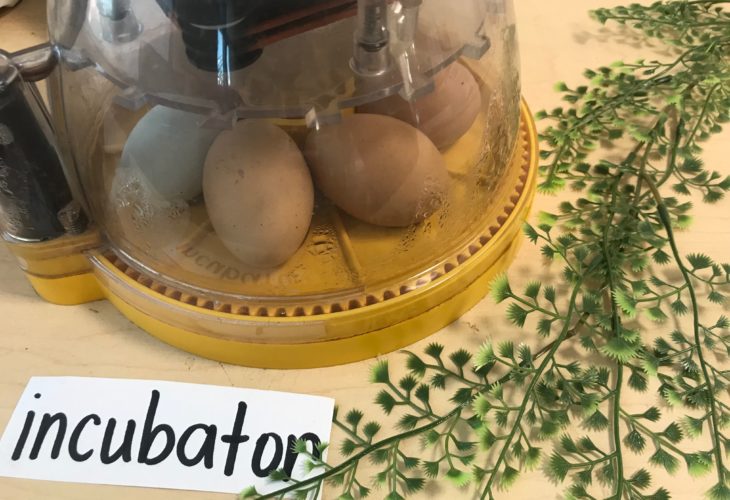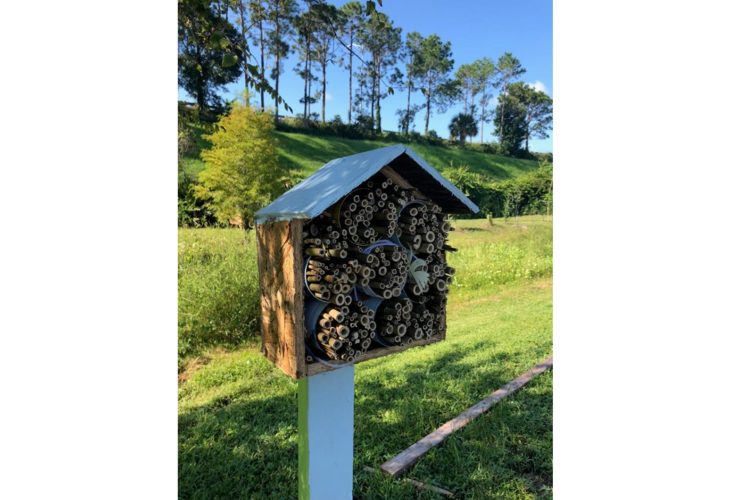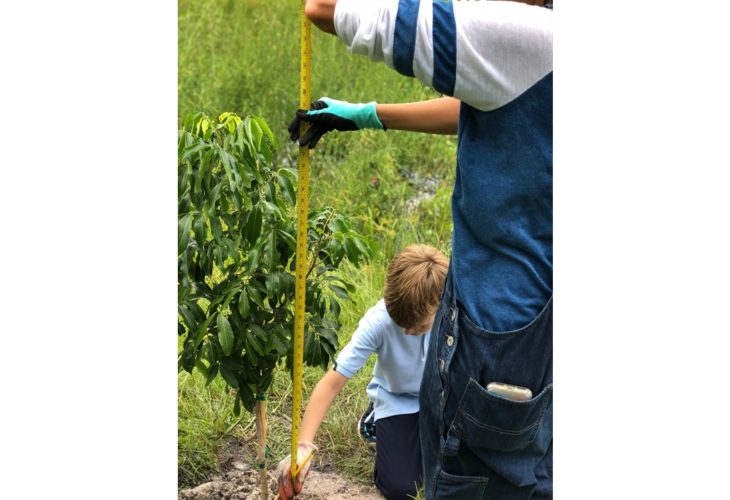Part Two of Two
Last week, Amy Soper (Director of our Seventh-day Adventist Initiative) shared the spark behind the Foundation’s Instructional Framework for 21st-Century Educators. This week, I’m picking up where she left off. In 2014, we partnered with an SDA school in Hyattsville, Maryland, to launch a two-year pilot of the Instructional Framework. After the success of that pilot, the Foundation was ready to fully implement the Instructional Framework in a school so both teachers and students could benefit from it over the long term. To us, that next step was clear, but we needed a partner — a school — that was both willing and able to join us and make it happen. That’s where Creation Kids Village (CKV) came in. They’ve brought our vision to life and truly took the Instructional Framework to the next level.
Located in Celebration, Florida, CKV provides Christian-based whole child education to students from six weeks old to fourth grade through project-based experiential learning. Founded on Adventist principles, CKV aligns with our Seventh-day Adventist Initiative. Its well-established infant and toddler program serves as the starting point for its continuum of supports that help children develop in “mind, body and spirit” — work that additionally mirrors our commitment to early learning and whole child instruction. When the Foundation and CKV first connected, we were seeking a school in which to implement the Instructional Framework while CKV was looking for an innovative and research-based academic framework to guide their elementary instruction. The potential for a partnership was clear and officially established in 2017.
Through weekly coaching conversations focused on designing lessons that originate from the Instructional Framework but are fully developed from teachers’ input and ideas, several opportunities have emerged that foster cross-curricular teaching and the seamless integration of real-world learning. One clear example of this is the school’s utilization of its garden and the garden’s active role as a conduit connecting classroom learning to the world outdoors — all efforts spearheaded by Nalani Cummings, Dean of Garden Education and Enrichments at CKV.
“I’ve always been interested in gardening,” says Nalani. “I grew up in Hawaii, where you’re outside in nature all the time — and that’s how I learned in school. When the CKV team was working on our philosophy, I thought about this outdoors element and how it benefited me — and how incorporating it can reach and embrace the whole child, which is what we’re all about. The way society is going and changing, I fear children don’t get a lot of that outdoor element anymore — but at CKV, it’s an integral component of our students’ education.”
In tandem with the Foundation, CKV developed focus points for Unit 1 project-based learning for grades K-4.
In kindergarten, students plant seeds and nurture their growth while engaging in a lesson from the Framework unit entitled “Caring About Myself and Others.”
In first grade, students incubate chickens and work together to take care of them, which stemmed from the Framework unit entitled “Teamwork.”
“The chicken coop enclosure hasn’t been designed, but that’s intentional,” says Nalani. “Students will have the opportunity to be part of the whole process from start to finish. The project is wonderful for collaboration, and it provides a natural direction for our first graders to express themselves in a constructive and creative way.”
In second grade, students examine the concept of building communities (the theme of the Framework unit) by reading informational text that explains how ants and bees build their communities by working together.
“The students observe the ants in the classroom building tunnels and working together and then read books to compare and contrast ants with humans,” says Gemma Wise-Beaumont, a second-grade teacher at CKV. “We are social beings, so there’s a great deal of overlap — and the students can see that. And with the honeybees, students make their own honeybee habitats out of bamboo and tin cans, and they see the full circle of it all. They go from comprehending the definition of a community to making the connection that we, as humans, live and operate in communities just like these insects do. And their excitement is both evident and contagious.”
In third grade, students begin by listening to a read aloud of the books Gilbert the Great and Bill and Peet. The former of these children’s books centers on the symbiotic relationship of a great white shark, Gilbert, and a remora fish, Raymond, while the latter focuses on a crocodile, Bill, and a plover bird, Peet. Both stories feature the main characters as friends, and the students then learn — through exposure to informational text and other multimedia sources — that these species have symbiotic relationships in real life.
“We discuss Gilbert and Raymond’s relationship as a class and then, from that discussion, the students collectively create a definition for the word ‘symbiotic’ before we look at the scientific definition to compare and contrast the two,” says Tiffany Purdie, a third-grade teacher at CKV. “At that point, we pivot our lesson from Reading to Science, where I introduce to the students how it works in nature. We create biodomes — small ecosystems in plastic bottles — so they can see how different things in nature work together to keep each other alive. Nalani helps me pull together resources, gather the soils and worms and ensure that the worms are properly fed so from there, the students can get ‘dirty,’ see science brought to life and start viewing the world as their classroom.”
Finally, in fourth grade, students study how relationships shape character and how one’s character evolves over time. They begin by reading the book The Giving Tree aloud, and then expand the lesson outdoors by creating a micro-fruit orchard.
“This idea stemmed from a student — and it’s not the only one of its kind,” says Nalani. “Students keep bringing more and more ideas to us, and with the Framework, we’re able to keep moving forward with them and bringing them to life.”
She added that the orchard made a real impact for one particular family.
“One student brought his mom and grandmother to CKV so they could see his tree in person. Now, as a result of that visit, his whole family has been eating more of the fruit growing on his tree at home. It’s neat how one lesson has created this huge movement — and we’re hearing stories like this one constantly.”
Across the board, we’ve received positive feedback on the Instructional Framework from CKV staff, who often cite the Instructional Framework’s flexibility and accountability as key strengths.
“The Instructional Framework has made me a better teacher because I now question myself and am more purposeful — reflecting on the ‘whys’ behind my ‘whats’ and challenging my reason behind every ‘because,’” says Gemma. “Everyone learns differently, and the Framework equips me to meet my different learners wherever they are. I want to encourage my students, and I feel the Framework helps me teach in a way that empowers them.”
Teachers also note that the Instructional Framework’s “vertical” and “horizontal” approach truly helps to close gaps across and within grade levels — resulting in a more comprehensive and cohesive academic journey for students.
“Kids love connecting the dots,” says Tiffany. “By blending lessons into multiple subjects — and transferring learnings from writing to science to other subjects — the Framework’s thematic approach encourages kids to do just that and experience learning in a new and very practical way.”
Nalani underscores Tiffany’s takeaway: “So often, a disconnect occurs when we think about subjects as being compartmentalized. That’s where the Framework shifts the paradigm. It builds bridges and establishes launching points for students and teachers alike to see the world as a plethora of lifelong learning opportunities — where we can constantly make connections and open countless doors to continued growth. Learning never stops — and that’s a thrilling concept.”
We will continue to work with CKV as the school further implements and innovates with the Instructional Framework. Our ultimate goal is to create a model that can be replicated and used in other schools (faith-based schools and beyond) as the infrastructure for their instruction. As for now, we’re thrilled to collaborate with an exceptional partner such as CKV on an effort that will provide lasting benefit for students and teachers alike.
To learn more about the Foundation’s Instructional Framework for 21st-Century Learners, read our past two blog posts:














